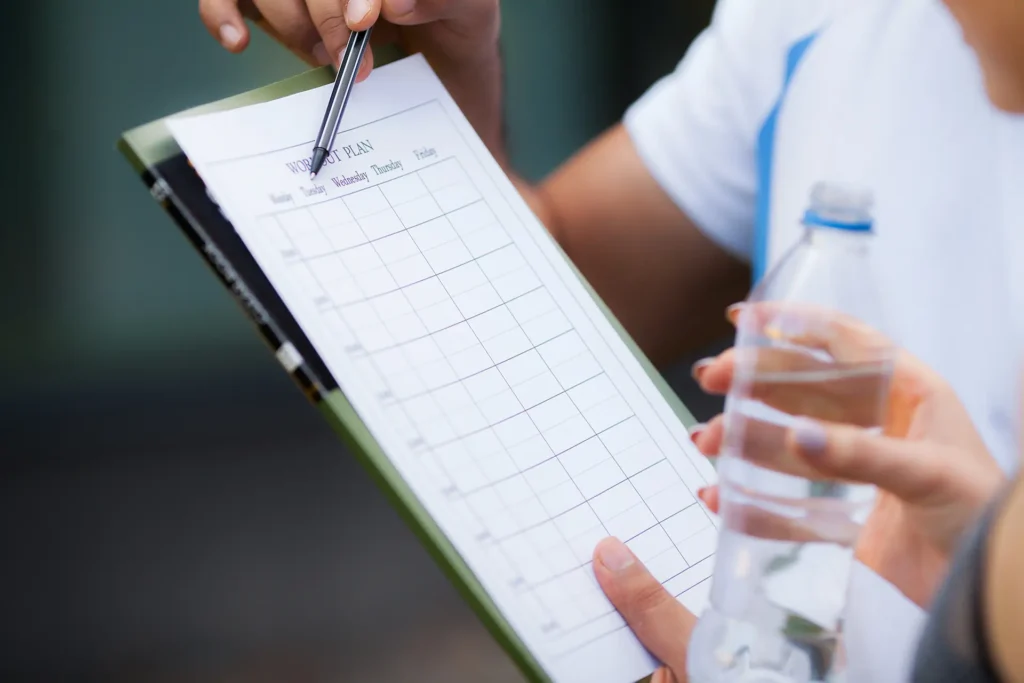Swimming is one of the most effective exercises for building overall fitness. It works nearly every muscle group while providing a low-impact workout that’s easy on the joints. But to truly maximise your fitness gains in the water, you need a structured swim workout plan. Without one, it’s easy to feel like you’re treading water without making progress.
This guide will help you create a simple, effective plan designed specifically for beginners who want to boost their cardiovascular health, build endurance, and improve full-body strength.
Establish Targets
To create a successful swim training plan, the first thing you need to do is set specific targets to meet. Knowing where you currently stand is crucial for setting these and avoiding injury or burnout. By understanding your current swimming ability, you can create a plan that challenges you but remains achievable.
For example, if you’re already comfortable swimming 200 metres without stopping, your next goal might be to reach 400 metres. Without assessing where you are now, you risk either setting goals that are too easy and won’t push you to improve, or too difficult, which can lead to frustration or overtraining.
Assessing your current level allows you to personalise your plan and track your improvements over time. It’s the foundation of effective training that ensures you’re progressing steadily towards your goals.
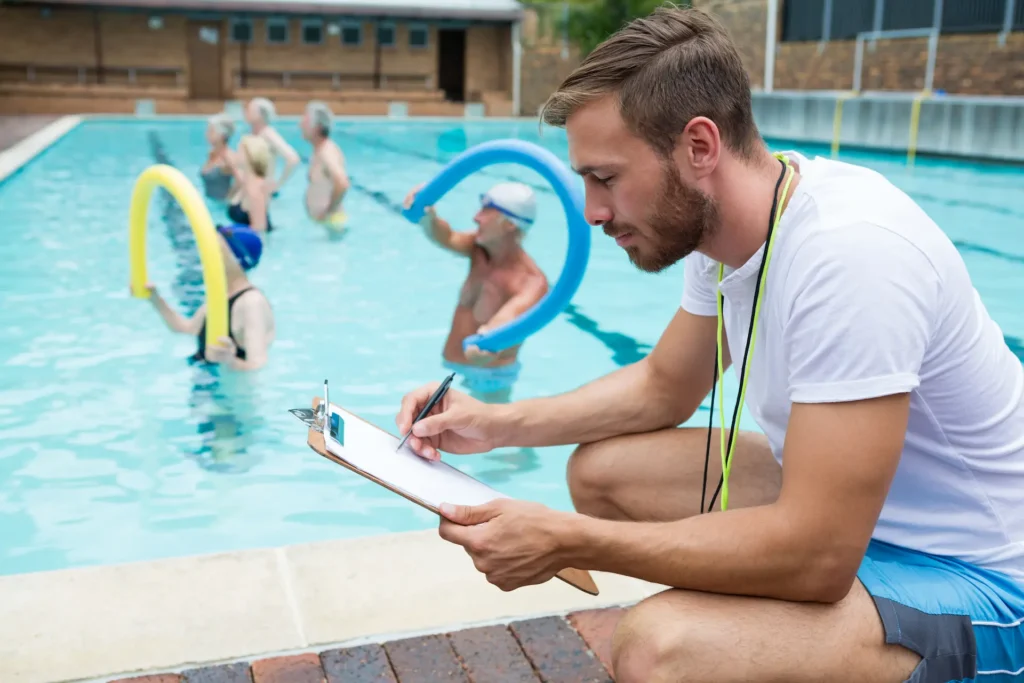
How to structure your training week
The backbone of a successful swim training plan is its structure. For beginners, aim for 3-4 sessions per week, ensuring that each workout has a clear focus, whether it’s endurance, technique, or speed. Here’s a breakdown of how a typical week might look:
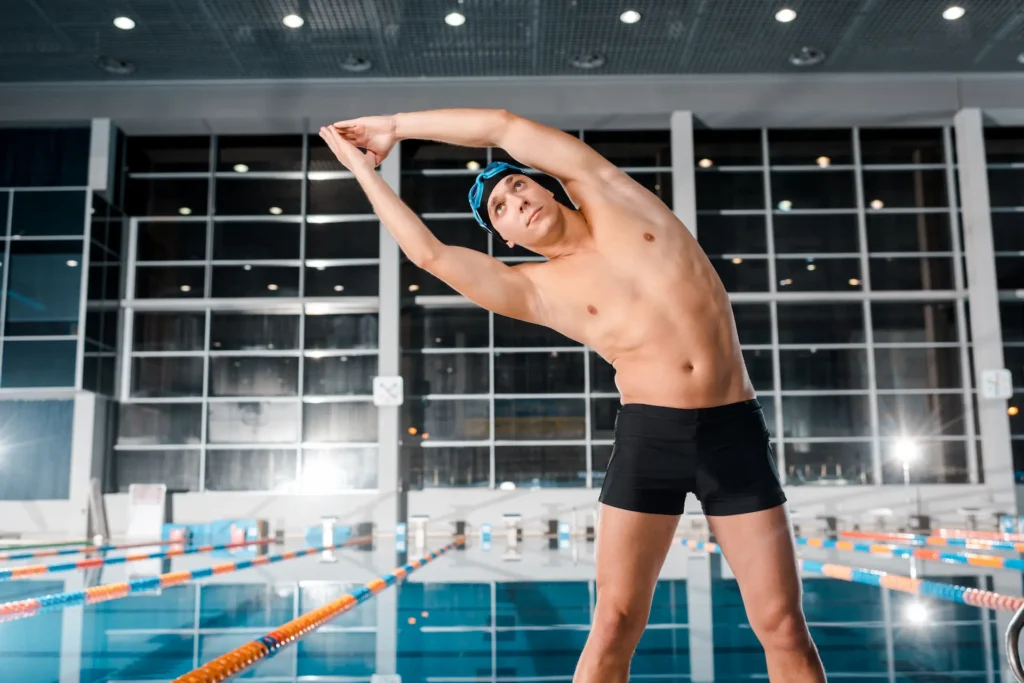
Warm-up and cooldown
Before diving into the main set, kick off each session by warming up your muscles and joints with an easy swim, ensuring you’re primed for a great workout. A proper warm-up increases blood flow, loosens your muscles, and prepares your body for higher-intensity swimming. For beginners, this could be around 100-200 metres of easy swimming, mixing in different strokes to activate all muscle groups.
You can also include some dynamic stretches on the pool deck to prepare your body for the workout. Here are a few effective stretches to consider:
- Arm Circles: Extend your arms out to the sides and make small circles, gradually increasing their size to warm up your shoulders.
- Leg Swings: While standing, swing one leg forward and backward to activate your hip flexors and hamstrings.
- Torso Twists: With your feet shoulder-width apart, twist your torso from side to side to loosen up your core.
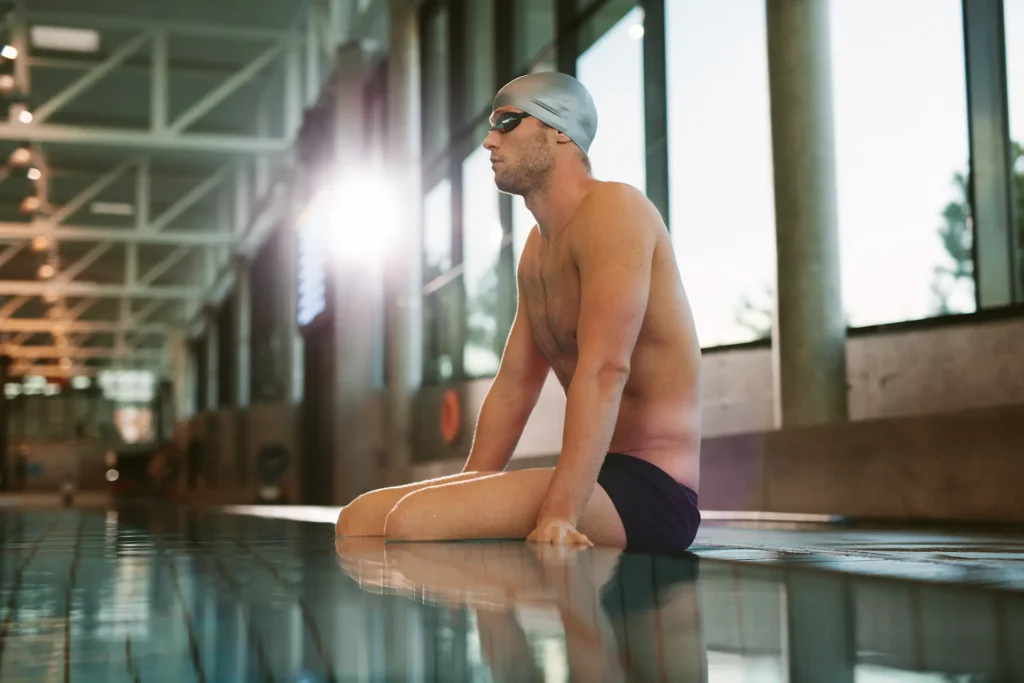
At the end of each session, take time to cool down by swimming at a relaxed pace for 200-300 metres. This helps gradually lower your heart rate, reduces muscle stiffness, and promotes faster recovery.
Here’s a sample week for a beginner swimmer:
Day 1: Endurance Swim
Start with a steady, continuous swim. This session is about building your aerobic capacity and overall stamina in the water. As a beginner, start at a manageable pace and distance, such as 200–400 metres. As your endurance grows, you’ll soon find yourself swimming longer and feeling stronger with every session. The key is to maintain a consistent, sustainable effort rather than pushing too hard.
Day 2: Technique-Focused Session
For this workout, concentrate on improving your swimming form. Improving your form not only makes you faster but also helps prevent fatigue and injury as you swim longer distances. Begin with specific drills that target areas like body position, arm stroke, and breathing rhythm.
Drill examples:
- Single-Arm Freestyle Drill: Swim using only one arm while the other is held straight in front. This drill isolates arm movement and helps refine the stroke’s pull phase.
- Kickboard Drills: Using a kickboard, focus solely on your leg technique, ensuring you’re generating power from the hips rather than the knees.
- Catch-Up Drill: Start each stroke only when the other hand has fully reached forward, helping to refine the timing of your arm movements.
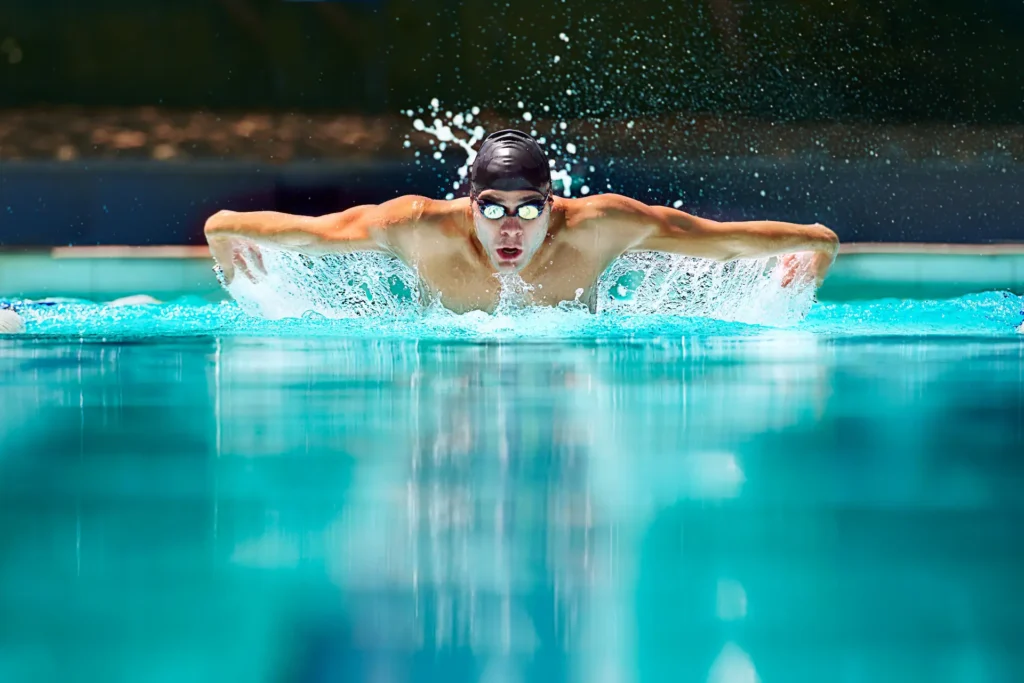
Day 3: Speed Training
This session is all about interval training, where you’ll swim short bursts at high intensity. Interval training helps improve your anaerobic capacity, making you faster and more efficient in the water. It can be exciting to see how quickly your speed can improve when you consistently push yourself with short, powerful sprints
A simple beginner set might include 6 x 50 metres at maximum effort, with 1 minute of rest between each sprint. As you progress, reduce the rest interval or increase the distance. These workouts train your body to recover faster and push through fatigue.
Key Tip: Focus on maintaining proper form during sprints, even when you’re pushing your speed.
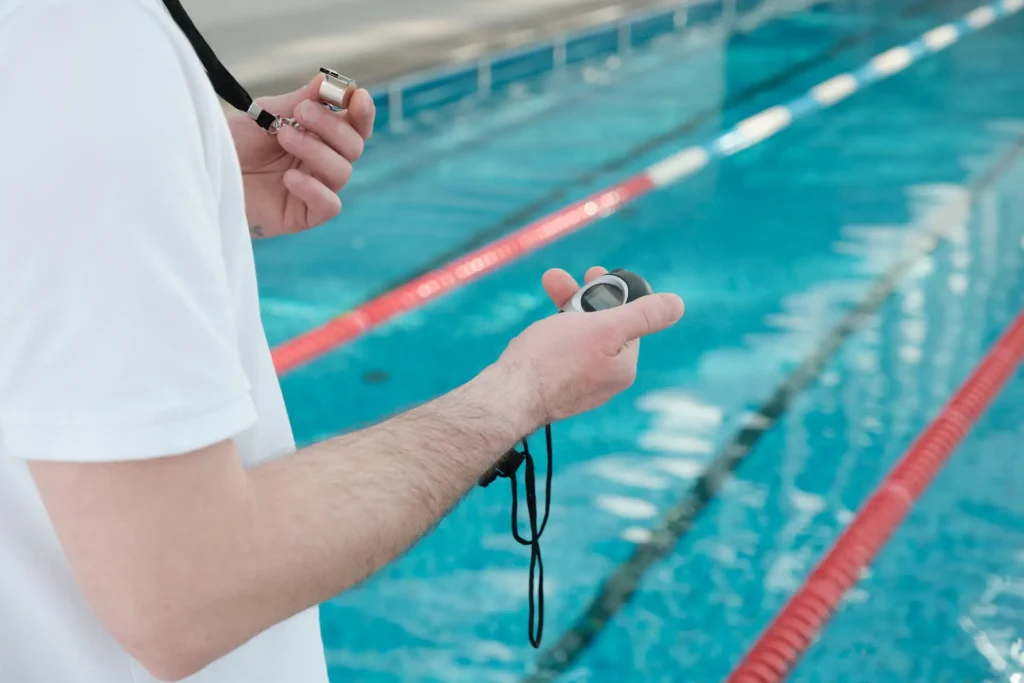
Day 4: Active Recovery or Rest
Recovery is just as crucial as training. On this day, you can either take a complete rest day or opt for active recovery, which could include a very light swim focusing on slow, controlled movements or light stretching.
If you choose to swim, keep the session relaxed at around 200-300 metres at a slow pace, focusing on relaxation and recovery. Remember, rest days are when your muscles rebuild stronger, so never skip them!
Day 5 (Optional): Fun or Technique Session
If you’re feeling physically strong and want to add an extra session to your week, you can choose to do an optional swim. This is your chance to have a playful swim, explore new strokes, practice breathing, or just enjoy the water while still contributing to your fitness. It’s meant to keep your routine flexible and enjoyable while still contributing to your progress.
For example, you could:
- Try technique drills to refine your stroke.
- Work on breathing techniques to improve efficiency in the water.
- Have a relaxed, recreational swim for fun, helping to keep your training varied and interesting.
Understand Progressive Overload
Progression is crucial to making gains in your swimming ability. Without it, your body won’t be challenged enough to adapt and improve. The idea is to gradually increase the intensity, distance, or frequency of your swims over time, which is called progressive overload.
Consistency and gradual improvement will lead to steady progress. Rushing or pushing too hard too fast can lead to burnout or injury, so it’s essential to balance effort with recovery.
How to progress:
- Increase Distance: Every 1 to 2 weeks, add an extra 100 metres to your endurance swim or an additional set. This gradual increase boosts your capacity without overwhelming your body.
- Reduce Rest Time: As your endurance and fitness improve, gradually shorten your rest time between sets by 10 to 15 seconds. This will challenge your body more as you get stronger and enhance your conditioning.
- Refine Technique: Even minor adjustments to your form can greatly improve efficiency. Regularly incorporate drills into your sessions to fine-tune your strokes.
Don’t Forget Recovery
Swim training can be physically demanding, and without proper recovery, you risk injury or burnout. Always incorporate at least one or two rest days into your weekly routine. On rest days, light swimming or stretching can help relieve muscle tension without adding extra strain.
Recovery isn’t just about rest, it’s a critical part of building strength, so treat those rest days with as much focus as your training sessions.
Key Focus Points for Beginners
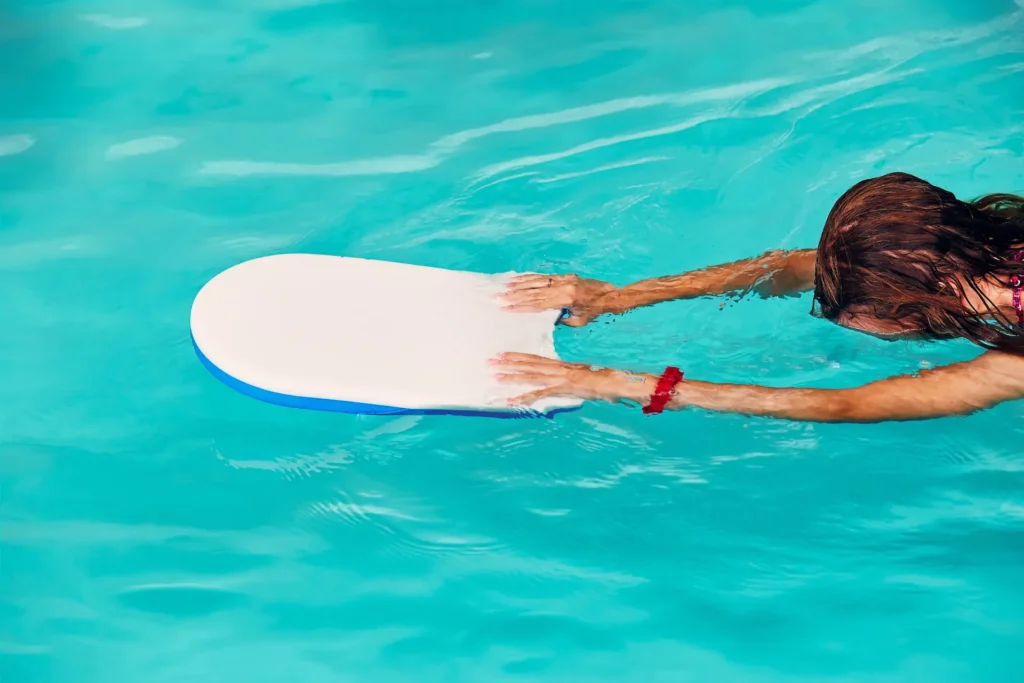
Breathing
Many beginners find breath control challenging. Mastering efficient breathing is essential for swimming longer distances without tiring quickly. Try practicing bilateral breathing (breathing on both sides) during your endurance swims. For instance, if you usually breathe every two strokes on your right side, switch to every three strokes, alternating between the right and left. This technique helps balance your stroke and improves technique, preventing one side of your body from becoming overworked.
Body Position
Your body should stay as horizontal and streamlined as possible in the water. Even a slight sag in your hips can cause drag and slow you down. To check your body position, ask a friend to record you swimming or try a “float test,” gliding in the water without kicking or stroking. If your legs sink, focus on engaging your core and glutes to maintain alignment with the surface.
Kick Technique
A strong, efficient kick originates from the hips, not the knees. Many beginners bend their knees too much, which creates drag instead of propulsion. To correct this, practise swimming a length with a kickboard, focusing solely on your leg movement. Keep your legs straight but relaxed, kicking from the hips with pointed toes. Over time, this will enhance your propulsion without tiring your legs as quickly.
Conclusion
This swim workout plan is specifically designed for beginners aiming to improve their fitness and swimming skills. By setting clear goals, following a structured weekly plan, and progressing gradually, you’ll see consistent improvement in both your endurance and technique. Remember, swimming is a journey, and with patience and consistency, your fitness and confidence in the water will grow.
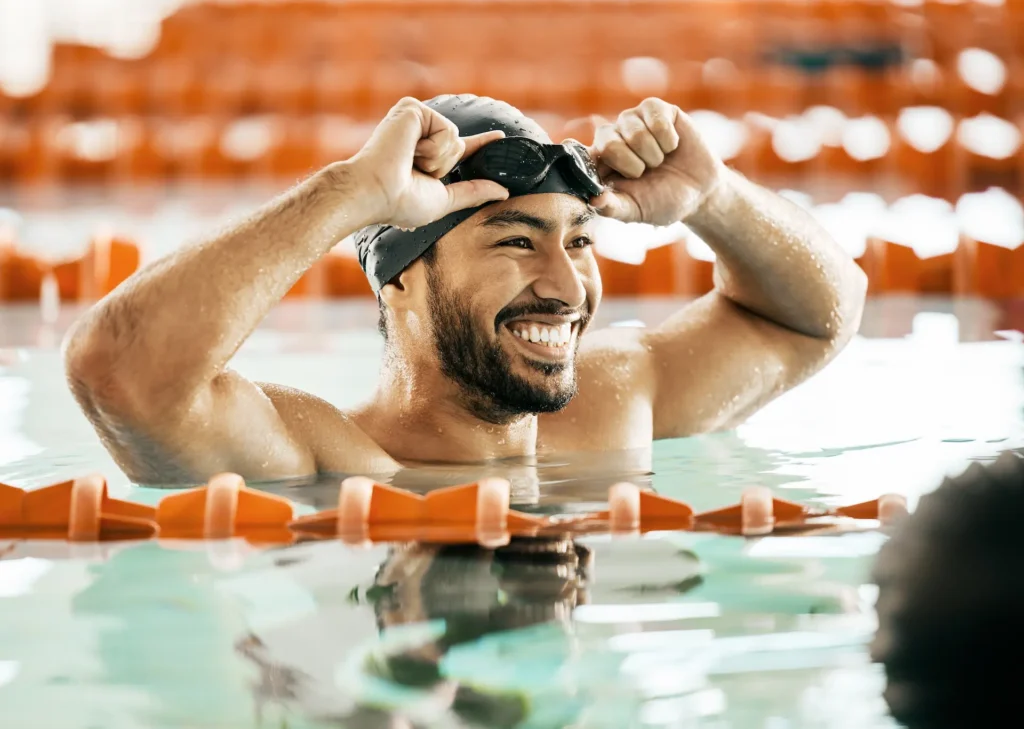
If you’re finding it tough to stay on track or need extra guidance, Swim Central offers both group and private lessons to help you reach your goals faster. Explore the advantages of personalised coaching and see how it can make a difference in your progress.

